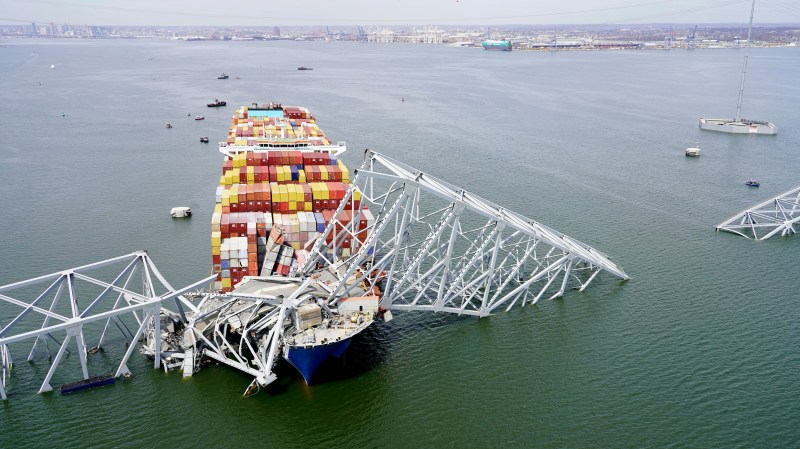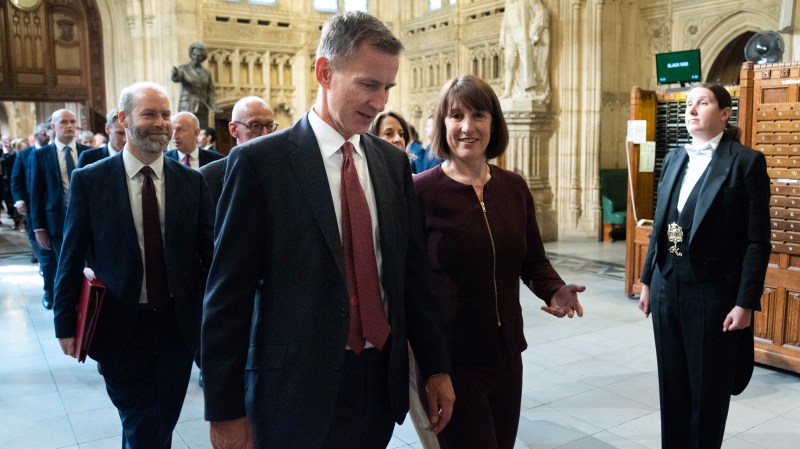Lloyd’s of London faces £500m loss over Baltimore bridge collapse
The collapse of the Baltimore bridge that caused chaos at one of the busiest ports in the United States will lead to a £500 million loss for the Lloyd’s of London insurance market.
The disaster, which occurred in March when a cargo ship collided with the Francis Scott Key Bridge, is expected to result in the biggest marine-related loss for the global insurance industry on record.
Bruce Carnegie-Brown, the chairman of Lloyd’s, said that he expected the overall hit suffered by insurers worldwide from the incident would be more than $5 billion, but the loss to the London market would be a more modest £500 million, net of reinsurance.
Lloyd’s has been partially insulated from the fallout of the disaster because both the bridge and Baltimore’s port were insured domestically in the US. For Lloyd’s “it’s the ship, it’s the cargo that’s on the ship and then it’s the cargoes that were trapped in the harbour that couldn’t get out”, Carnegie-Brown said.
Six people died when the Dali cargo vessel crashed into one of the bridge’s support columns, bringing down the structure and blocking the Fort McHenry Federal Channel. It took until June for the channel to be fully reopened.
Lloyd’s, the world’s biggest and oldest insurance market, sits at the heart of the global industry and has its origins in the maritime world. It began in a coffee house opened by Edward Lloyd by the Thames in the second half of the 17th century, which became a hub for businessmen to exchange information about shipping. By the 18th century it was publishing the Lloyd’s List of shipping news and it soon became a centre for maritime insurance.
The modern market provides cover for everything from satellite launches and fine art to shipping cargoes and cyber incidents and is made up of specialist underwriting syndicates and brokers who price and place business. It has provided policies to insure Bruce Springsteen’s voice and David Beckham’s legs.

Half-year results from the market showed its pre-tax profits had climbed to £4.9 billion in the six months to the end of June, up from £3.9 billion a year earlier. It published a combined ratio, a key measure of underwriting profitability, of 83.7 per cent, an improvement from 85.2 per cent in 2023 and its best first-half result since 2007. A figure below 100 per cent indicates a profit, while anything above denotes a loss.
Lloyd’s was helped by a more benign period for natural disasters during the first six months of the year, as well as rising prices for insurance.
The earthquake that struck Taiwan in April had not had a significant impact on the market, Carnegie-Brown said, while the global computer system meltdown that occurred in July also was not expected to result in much of a blow. This is because the outage, caused by a faulty software update from Crowdstrike, a cybersecurity company, lasted less than 48 hours and it is only after this point that most cyber-risk policies kick in.
Gross written premiums in the market increased by 6.5 per cent to £30.6 billion, excluding currency movements. John Neal, the Lloyd’s chief executive, said the figures were “a superb set of results”.






